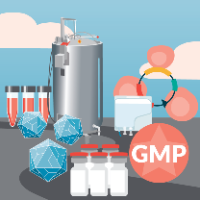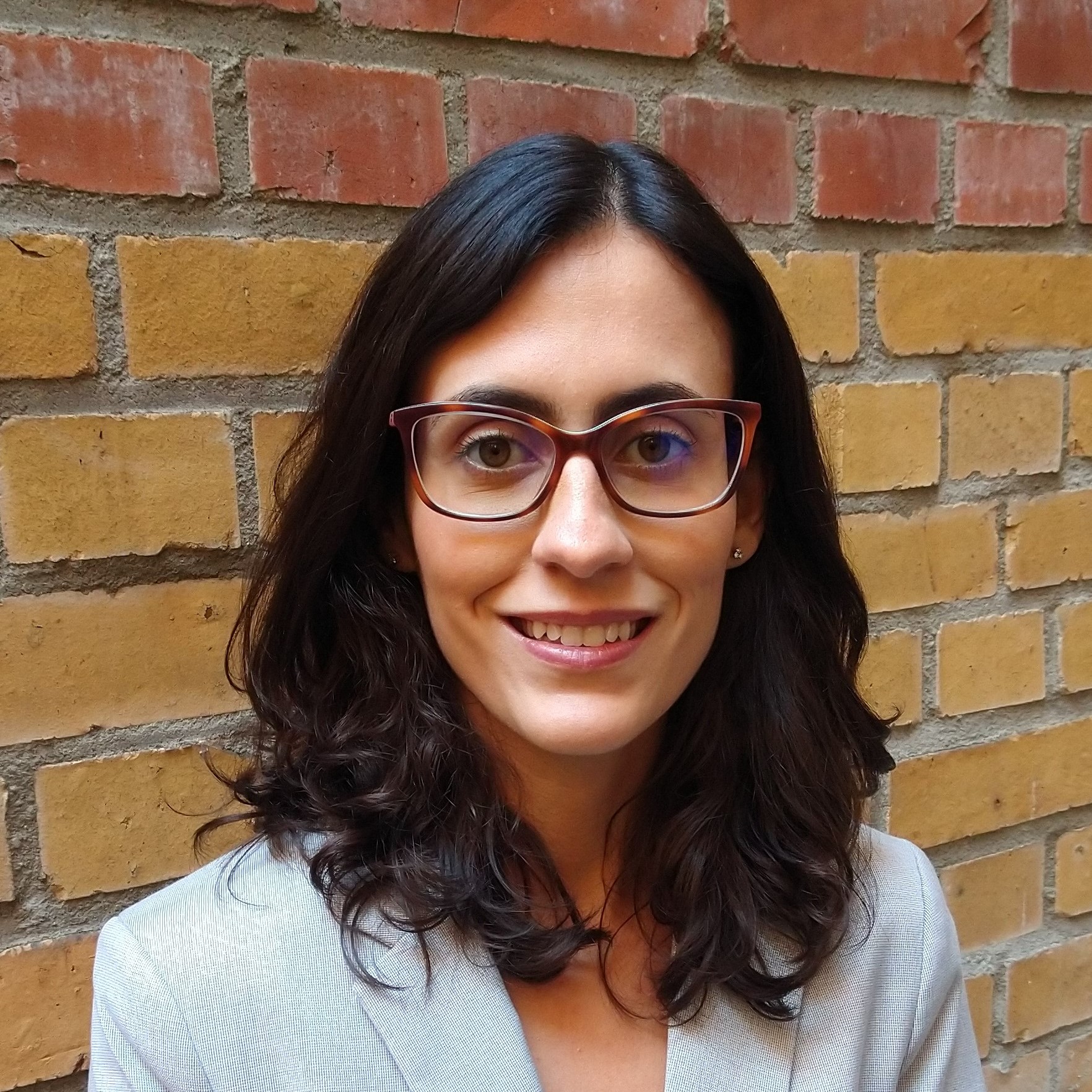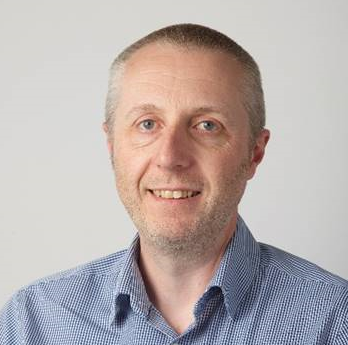Improving AAV vector manufacture: a question of scale
Cell & Gene Therapy Insights 2021; 7(3), 417–426
10.18609/cgti.2021.069
Q Could you tell us about the chief drivers for improving AAV vector manufacturing, and what the key target areas in this regard are?
SW: AAV is the viral vector most commonly used for in vivo gene therapies. For these kinds of therapies, in particular when applied systemically, enormous amounts of vector of up to 1 x 1015 viral genomes (vg) per patient are needed.
If we want to produce these amounts of vector with transient transfection, this can correlate to batches of up to 50 L, just to produce enough material for one patient. The problem is that transient transfection is extremely difficult to scale, and very costly. If we want to bring these therapies to patients in need, there is a clear production gap – particularly if we want to target diseases with high incidence such as Parkinson’s. Cevec’s goal was to simplify AAV production, and ultimately make it as easy as monoclonal antibody (mAb) production.
The solution was to eliminate the transient transfection step. Nobody uses transient transfection for antibody production; instead they use stable cell lines. This is why we generated our stable AAV production platform, called Elevecta®, in which we stably integrated all components necessary to produce AAV in the genome of our suspension cells.
This allows us to scale-up the cell culture to the intended production volume, and then simply induce AAV production, with titers of 1 x 1014 vg/L for a normal batch, and so far 3x1015 vg/L for more intensified processes.
Q How would you sum up the pros and cons of transient of transfection versus stable producer cell line-based AAV upstream bioprocessing?
DM: The main advantage that transient transfection offers is speed, as it is very quick, and has also got a lot of flexibility. It is very easy to swap in new constructs, such as modified genes of interest, or even looking at different capsids. It is typically done in adherent culture, but we are now seeing this come through to suspension as well.
As Silke mentioned, the reagents are incredibly expensive. For example the volumes of PEI, if you are using that as a transfection reagent, are quite high. The amounts of DNA that can be needed are also very high, and it is expensive to get good quality GMP grade DNA.
There are also issues around liquid handling. Doing something at the small scale is easy, but if you come to scale-up to large-scale, it becomes difficult to add the DNA and your transfection reagents in a timely manner. The timing for some of these things is critical. For example, it can be between 5 and 20 minutes, but adding large volumes into a reactor isn’t straightforward when you scale-up. The other disadvantage is the consistency of batches. If you are always having to make a transient transfection, the quality of that product could be different with each transfection if it is not well controlled.
Stable cell lines have a key advantage in that you only need to make them once. Obviously, that brings with it better cost of goods, because you are not having to add transfection reagents every time, or have DNA made every time. Additionally, these things can be difficult to get hold of, and there can be long lead times – especially with the current extended lead times we are seeing (due to the COVID-19 pandemic).
On top of that, it is fair to say it is easier to scale-up a stable cell line compared to an adherent one. There is also a lot of background knowledge within the industry from mAb production, so people are really familiar with this. A stable cell line is much more normal for people scaling up. However, stable cell lines do need some time to generate.
SW: This is true – cell line development takes time. We all know time to market is very important for everyone. But it is also really important to produce enough material in order to secure supply, with consistent quality, and also at a reasonable price.
For the generation of our stable producer cells, we use our well-characterized alpha cell line in which we have already integrated the replicase and the helper genes as a starting point. These are the two components which are common for each and every AAV project.
We then start cell line development by stably integrating the project-specific capsid, and the transgene, followed by one single cell cloning. Therefore, the very time intensive single-cell cloning step is only done once. The timelines for cell line development are around eight months from DNA – so from the plasmid to identification of the top monoclonal producer single cell clone. Also keeping in mind what David just said, with this system, you save the generation of plasmid DNA or helper virus in GMP quality, which currently has very long lead times.
Q What are the capabilities and advantages of the latest stirred tank reactors (STRs) for AAV vector production?
DM: Modern STRs have a number of advantages compared to the traditional systems, where you would be looking at adherent culture. Primarily, those are ease of use and familiarity of systems compared with flatware.
Scale-up is also very straightforward with STRs. With flatware, it can be difficult to scale up enough, so you have to do multiples rather than just do one large bioreactor. The seed train of STRs is also simplified, as there is less manual handling needed. You don’t have to handle lots of flasks, and instead you can just go from one stirred tank to another, which is very straightforward.
Recently, single-use bioreactors have come to the fore, and they offer rapid set-up and turnaround. That is an advantage in a busy facility as you have less downtime, so you can get more batches through. With single-use there are also reduced validation requirements. For example, you don’t have to do cleaning validation, which can take a long time. That is key in a multi-product facility. There are a large range of volumes; recently larger scale has become available, up to several thousand liters in single-use. Historically, that just hasn’t been available.
Within the bioreactor itself, you can now have representative sampling from an STR. Because your cells are constantly being mixed, the contents should be homogenous. Unlike an adherent culture where you can only sample the supernatants and get an idea of what nutrients are doing, you can sample the supernatant and the cells. This enables you to get a very good idea of how the cultures are behaving.
As well as that advantage, with modern aseptic connectors it is possible to put novel sensor technologies in as these become available. Historically we have looked at pH and dissolved oxygen, but more and more now people are looking at things like Raman spectroscopy, for example. This leads nicely into the PAT (Process Analytical Technology) initiatives that are ongoing.
Q Building on that, what are the chief considerations for upstream bioprocess development with an STR?
DM: The considerations are similar for both STR and adherent technologies. It is key to really understand what your target final scale is. You may not know that when you start, so that can present a challenge. It is important that any process you are developing can operate within the design space that is available at the large scale, when you start to do your scaling up.
When we worked with Cevec, we started at the 50-L scale on our Allegro™ STR bioreactor and scaled to 200 L. Because of how we do our development work and our scale-up, we know that we could scale that process further. We are not limited by any parameters within the scale-up strategy that we have. For example, we know we can supply sufficient oxygen within the systems in all the reactors that we use.
This comes around to what your strategy is for scaling up. There are lots of different ways that people apply scale-up strategies. They may try and maintain power input, or tip speed, or gas flow rates per unit volume. It is also important to look at what the CO2 accumulation is doing. For example, at small scale some people may apply a headspace gassing to remove CO2 from the system. But when you get to a large-scale bioreactor, that simply isn’t going to have much of an effect. It is important to understand these things right at the start, before you start scaling up.
Additionally, what you do easily at the small scale, you can’t necessarily do at large scale. A key example here is addition volumes. If you are adding 200 mL to a 2 L bioreactor, that is really easy to do.
When you are at the 2,000-L scale and it is 200 L you have to add in, that is a whole different ball game, both in terms of the timing it takes, and the logistics of physically maneuvering this volume around a facility. It is important not just to think of the bioreactor, but the whole facility fit, and how this is going to operate within a bioreactor suite.
There are also things that often get missed. There are differences in heating and cooling times within large-scale and small-scale bioreactors. If you are employing a temperature shift, and the timing and rate of that shift is important, that is going to behave very differently at large-scale than it will at small-scale.
Q Can you tell us about your own experiences in scaling-up into an STR?
JC: Before the transfer to Pall, we did initial work at Cevec. We did characterization in the mL scale that included some screening in deep well plates, as well as shake flasks. At the end, we did some screening in the Ambr® 15 stirred tank bioreactor system. This was then directly scaled to 10 L at Cevec, and this 10-L process was then transferred to Pall. This worked out very efficiently and smoothly.
At Pall this was later scaled up to 200 L, and the biggest thing I learned was the parameters used for this work. In our case, it was the power input and the superficial gas velocity for the air flow rate calculation. David, can you comment on the choice of these strategies you used?
DM: We chose these parameters, and it was key to understand the small-scale model before we started scaling up. Within Pall we generated a lot of characterization data around our bioreactors, and we looked at different scaling strategies. The reason we settled on power input and superficial gas velocity was that we were able to maintain those constant across the entire range of bioreactors.
At the end of the day it is a compromise, because you can’t keep everything the same, but we found that this gave us the best scale-up. Having that well-defined strategy really simplifies scale-up to the larger scale.
Another of the key things here is that open communication is important, both to ensure the process is transferred to us, and then that scaled-up process can be transferred back to either the customer or to manufacturing sites. This is something that works really well when people talk together.
JC: After this scale-up we were excited to learn that the CAP cells grew very well in the Allegro bioreactor system at the two scales of 50 and 200 L, and the cells achieved short doubling times. High viability was maintained in the cell growth phase before the induction of AAV production. The processes were very reproducible, and very importantly, the productivity was maintained throughout the scale-up process.
Q We have talked a lot about the upstream side of things – Amar, could you introduce us to the downstream bioprocess technologies involved in the recent work with Cevec, and the advantages they offer?
AJ: Pall have some great offerings in downstream for gene therapy products. We introduced technologies into both the clarification and the ultrafiltration unit operations for the Cevec downstream process.
For clarification, we introduced SeitzTM Depth filters. These step filters come in a wide selection of pore sizes that can be tailored to different feed streams. They are suitable for both suspension feed streams and adherent feed streams, and give you excellent capacity and product yield.
The depth filtration process was developed on small SupracapTM 50 modules, which have 22 cm2 effective filtration area, and we know how these linearly scale up to the larger StaxTM capsules which come with 0.5–2 m2 effective filtration area for double-layer construction depth filters and 0.25–1.0 m2 effective filtration area for single-layer construction depth filters. The advantage to these Stax capsules is that they are disposable and easy to use. In a facility, the Stax capsules can easily combined to create the process area that you want with a small footprint, and easily disposed of after use.
Usually, a bioprocess specialist would visit in the field, but during the first quarter of 2020 it was unfeasible to do site visits due to COVID-19 being rampant in Europe. We worked with Cevec to identify the filters we wanted to assess, we did two or three studies with them, and we analyzed the data together. We decided upon a process that gave us a good yield, good operating time, had a compact footprint, and amplified the good cost of goods. We tested that using 1–2 L at the Cevec site, and that process was then transferred to Pall’s AcceleratorSM process development services team at the Harbourgate site in Portsmouth, UK, and we tested that at 50 L or 200 L. We had very good scale-up with that, with very similar pressure profiles, and good product quality and yield.
Another technology we introduced to the Cevec process was Pall’s OmegaTM T-series TFF cassettes, to replace existing TFF technology within the Cevec process. Our Cadence® single-use TFF modules are great – they work at small-scale, where you can do development or small-scale lab work, and they scale up to large devices. These Cadence single-use devices are already gamma irradiated, which makes it much easier for processing and manufacturing where you can eliminate pre-use sanitization, and pre-use processing time, as well as buffer usage. Another advantage is that these gamma irradiated units come in the same arrangement and size as the conventional cassettes, so they can be swapped in and out easily as scale dictates.
The TFF was sized at around 100 cm2, and for the Cevec processes we used the 100 kDa molecular weight cutoff membrane. Again, this worked really well for the Cevec process, and scaled up to 200 L.
Q Jens, it would be great if you could tell us about your downstream bioprocessing experience with tangential flow filtration steps. How did they perform in terms of scalability, for instance?
JW: The initial problem with the downstream process we developed at Cevec was that the main chromatography step of our AAV downstream process had a rather slow binding kinetic. Therefore, the intention of the development of the TFF step in the downstream process was to reduce the process time for the sequent chromatography step by concentrating the cell culture sample. This was successfully achieved, and the process time was shortened by several hours.
We developed and transferred the process for up to 3 L cell culture sample to Pall, and the process was easily reproducible at Pall. As Amar already mentioned, a linear scaling to 10-, 50-, and 200-L scale was working out as expected without significant changes in any of the parameters for the TFF.
Q What are the do’s and don’ts on the tech transfer on the downstream side for you, and are there any examples you can share from the Cevec partnership?
AJ: The tech transfer is essential to give the receiving lab all the process knowledge to run the process and to get the right productivity and product quality. It is the responsibility of both parties to get it right.
Do start early – we started the tech transfer in the week after the project kickoff, many months before the first batch was going to be run.
Do structure information transfer – I prepared some process information templates for the different unit operations that gave details of the inputs and outputs, the filter areas, and the flowrates, and that was the basis for the tech transfer. It is also helpful for scale-up.
Do maintain communication – during the tech transfer we communicated really often and had several side meetings as well as our usual group catchups. We identified early on that there was an issue with clarification, where the units come in discreet sizes and we had to deviate away from the linear scaling. Together we worked to identify the best solution that would help us get a bill of materials to proceed with the batch.
Finally, do review documentation and don’t assume anything. It is very easy to make copy–paste errors, or to think something is so obvious as to not mention it. Detailing those things can really help in making tech transfer run smoothly. Overall, the transfer between Cevec and Pall went well.
JW: We experienced that some obstacles could be different equipment and capabilities of in-process analytics, which could result in transfer issues. In our experience, and this was also the case with Pall, early communication during DSP development helps to avoid reliance on special devices or analytical measures during the development work that cannot be set up at larger scale or on different sides. As Amar said, early communication is very important.
Q What are the key benefits in having a technology partner in vector bioprocess scale-up, and could you illustrate them with some examples from the partnership with Pall Corporation?
JC: At Cevec, we do not have large-scale capabilities in-house, so it is logical to collaborate with a very experienced partner who is able to do the scale-up for our processes. Now, we have a straightforward general process which can then be transferred to customers. This can be adapted if necessary, according to the project needs or adjustments for different single-cell clones can be done, for example.
Usually, Pall also offers customers to go on-site and chaperone in key steps during the production process. In our case this was unfortunately not possible due to the COVID-19 situation, but in the future if we work together and do more processes, we can learn more and see the actual scale-up happening.
JW: I also learned a lot in this cooperation with Pall. Although several processes have been successfully transferred to customers in the past, usually only minor information from the actual up-scaling is transferred back to Cevec once the project is in the customers’ hands.
Due to the close communication with Pall, we learned a lot about the possible obstacles and critical points in managing such a project when it comes to production scale. For example, lead times of materials at larger scale, which are typically not really relevant in research and development. This really helped Cevec to better oversee the demand of our customers during the research and development stage.
Affiliations
Silke Wissing
Vice President, R&D
Cevec Pharmaceuticals
Juliana Coronel
Head of Upstream Process Development
Cevec Pharmaceuticals
Jans Wölfel
Head of Downstream Processing and Analytics
Cevec Pharmaceuticals
David Mainwaring
Principal Scientist
Pall Corporation
Amar Joshi
Senior Scientist
Pall Corporation
Authorship & Conflict of Interest
Contributions: All named authors take responsibility for the integrity of the work as a whole, and have given their approval for this version to be published.
Acknowledgements: None.
Disclosure and potential conflicts of interest: The authors disclose that Pall Corporation owns patents relevant to the Biotech Industry. S Wissing, J Coronel and J Wölfel declare that they are employees of Cevec Pharmaceuticals. D Mainwaring and A Joshi declare that they are employees of Pall Corporation. J Coronel has one patent pending related to ELEVECTA. S Wissing is co-inventor of several planned patents as well as pending patents describing the stable AAV producer platform in this manuscript called ELEVECTA. The authors declare that they have no other conflicts of interest.
Funding declaration: Activities at Pall Corporation for the above work were performed on a fee for service basis for CEVEC.
Article & copyright information
Copyright: Published by Cell and Gene Therapy Insights under Creative Commons License Deed CC BY NC ND 4.0 which allows anyone to copy, distribute, and transmit the article provided it is properly attributed in the manner specified below. No commercial use without permission.
Attribution: Copyright © 2021 Pall Corporation and Pall Europe Limited. Published by Cell and Gene Therapy Insights under Creative Commons License Deed CC BY NC ND 4.0.
Article source: Invited.
Interview conducted: Mar 29 2021; Revised in date: Apr 14 2021; Publication date: Apr 29 2021.







